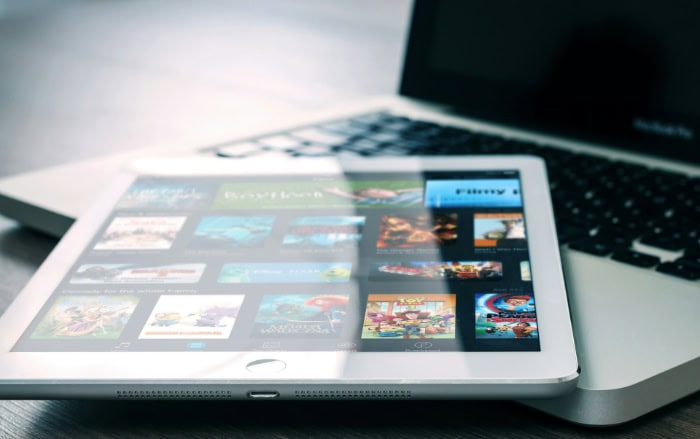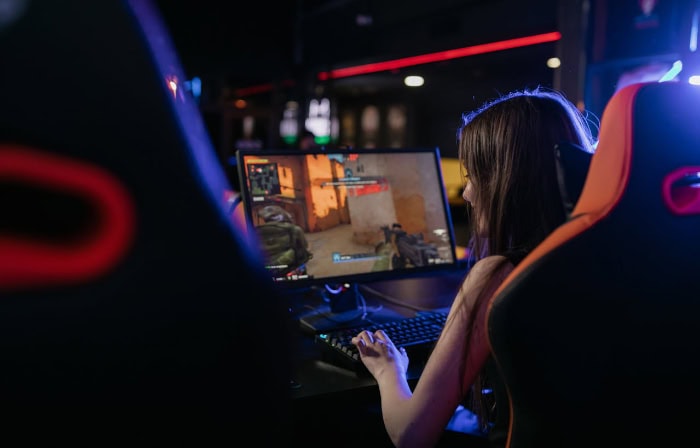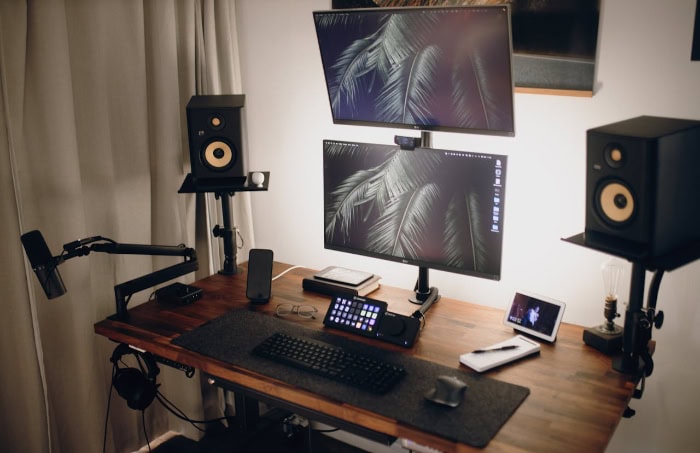1080p vs. 720p: Your Resolution Questions Answered

Resolution plays a critical role in determining the visual quality of digital content on our screens. Two common resolutions that have gained widespread popularity are 1080p and 720p.
While both offer a significant improvement over standard definition, there are notable differences between the two that impact user experience across various devices and applications.
Technical Specifications
To fully grasp the differences between 1080p and 720p resolutions, it is essential to examine their technical specifications. These specifications provide a foundation for understanding how each resolution affects image quality, performance, and compatibility across various devices and applications.
Pixel Count and Aspect Ratio
Pixel count is one of the primary factors that distinguish 1080p from 720p. A pixel is the smallest unit of a digital image, and the more pixels an image contains, the higher its resolution.
1080p, also known as Full HD, has a pixel count of 1920 x 1080, which translates to a total of 2,073,600 pixels. In contrast, 720p, or HD, has a pixel count of 1280 x 720, resulting in a total of 921,600 pixels. This means that 1080p contains more than twice the number of pixels compared to 720p.
Both 1080p and 720p typically maintain a 16:9 aspect ratio, which is the standard widescreen format for most modern displays. This aspect ratio ensures that the image is displayed proportionally across different screen sizes without distortion or cropping.
Screen Resolution Comparison
Screen resolution refers to the number of pixels that a display device can show horizontally and vertically. When comparing 1080p and 720p on the same screen size, the difference in resolution becomes apparent.
A 1080p image will appear sharper, clearer, and more detailed than a 720p image because it has a higher pixel density. This means that the pixels are packed more tightly together, resulting in a smoother and more refined picture.
However, the perceivable difference between 1080p and 720p diminishes as the screen size decreases or the viewing distance increases. For example, on a smaller screen, such as a smartphone or a tablet, the difference between 1080p and 720p may be less noticeable than on a larger television or computer monitor.
Refresh Rate Capabilities
Refresh rate is another technical specification that can impact the viewing experience, particularly for fast-paced content like video games or sports. Refresh rate refers to the number of times a display updates its image per second, measured in Hertz (Hz).
A higher refresh rate results in smoother motion and reduced motion blur.
Both 1080p and 720p are capable of supporting various refresh rates, typically ranging from 60Hz to 240Hz, depending on the display device and the content source. It is important to note that the refresh rate is independent of the resolution, and a higher refresh rate does not necessarily mean a higher resolution.
However, higher resolutions like 1080p may require more processing power to maintain high refresh rates compared to lower resolutions like 720p.
Visual Quality

While technical specifications provide a foundation for understanding the differences between 1080p and 720p, the visual quality of each resolution is what ultimately impacts the viewer’s experience.
Image Sharpness and Clarity
Image sharpness and clarity are two of the most noticeable aspects of visual quality when comparing 1080p and 720p resolutions. Due to its higher pixel count, 1080p offers superior image sharpness and clarity compared to 720p.
The increased pixel density of 1080p allows for finer details to be displayed, resulting in a more lifelike and immersive viewing experience.
In practical terms, this means that 1080p content will have more well-defined edges, clearer text, and a greater level of detail in textures, patterns, and facial features. This enhanced sharpness and clarity can be especially beneficial when viewing content on larger screens or when sitting closer to the display.
Color Reproduction and Contrast
Color reproduction and contrast play a significant role in the overall visual quality of an image. While resolution itself does not directly affect color accuracy or contrast ratios, higher resolutions like 1080p can indirectly enhance these aspects of the image.
With more pixels available, 1080p displays can produce a wider range of colors and more subtle color gradations compared to 720p. This can result in more vibrant and lifelike images, particularly in scenes with complex color palettes or gradients.
Similarly, the increased pixel density of 1080p can contribute to better contrast ratios, as the display can more precisely control the brightness and darkness of individual pixels. This can lead to deeper blacks, brighter whites, and a more dynamic range of luminance values, enhancing the overall visual impact of the image.
Viewing Distance Considerations
The perceived difference in visual quality between 1080p and 720p is influenced by the viewer’s distance from the display. As the viewing distance increases, the ability to discern individual pixels decreases, and the difference between resolutions becomes less noticeable.
For example, when viewing content on a 50-inch television, the benefits of 1080p over 720p will be more apparent when sitting closer to the screen, such as 6 to 8 feet away. However, as the viewing distance increases to 10 feet or more, the difference in visual quality between the two resolutions may become less perceptible to the average viewer.
It is important to consider the screen size and typical viewing distance when choosing between 1080p and 720p. For larger screens or closer viewing distances, 1080p will provide a noticeable improvement in visual quality.
However, for smaller screens or longer viewing distances, the benefits of 1080p may be less significant, and 720p may suffice.
Performance and Compatibility

In addition to visual quality, performance and compatibility are crucial factors to consider when comparing 1080p and 720p resolutions.
Processing Power Requirements
The processing power required to handle 1080p and 720p content varies depending on the device and the nature of the content. Generally, 1080p content demands more processing power than 720p due to its higher pixel count and data throughput.
For video playback, devices need to decode and render more pixels in real-time to display 1080p content smoothly. This increased workload can strain the device’s processor, particularly on older or lower-end hardware. In contrast, 720p content requires less processing power, making it easier for a wider range of devices to handle.
When it comes to gaming, the difference in processing power requirements between 1080p and 720p becomes even more pronounced. Rendering games at 1080p resolution requires significantly more graphics processing power than rendering at 720p.
This means that gamers who prefer 1080p may need to invest in more powerful graphics cards or gaming consoles to maintain smooth gameplay and high frame rates.
Device Compatibility
Device compatibility is another important consideration when choosing between 1080p and 720p resolutions. While most modern devices support both resolutions, some older or lower-end devices may have limited support for 1080p content.
For example, older smartphones, tablets, or televisions may have screens that are only capable of displaying 720p resolution. In such cases, opting for 1080p content would not provide any visible benefit, as the device cannot fully utilize the higher resolution.
Similarly, some streaming devices or gaming consoles may have limitations in terms of their output resolution. It is essential to check the specifications of the devices you intend to use to ensure they are compatible with your desired resolution.
Content Availability
The availability of content in 1080p and 720p resolutions can also influence your decision. While 1080p has become increasingly common, not all content is available in this resolution.
Many streaming platforms, such as Netflix, Amazon Prime Video, and YouTube, offer a wide selection of content in both 1080p and 720p resolutions. However, some older or less popular titles may only be available in 720p or even lower resolutions.
Similarly, when it comes to gaming, not all games are optimized for 1080p resolution. Some games may have a maximum output of 720p, while others may offer 1080p support but with reduced graphical quality or frame rates to maintain performance.
It is worth considering the type of content you consume most frequently and checking its availability in your desired resolution before making a decision. If the majority of your content is available in 1080p and your devices support it, opting for this higher resolution can provide a better overall viewing or gaming experience.
Practical Considerations

While technical specifications, visual quality, and performance are essential factors to consider when choosing between 1080p and 720p resolutions, there are also practical considerations that can impact your decision.
Data Usage and Bandwidth Needs
Data usage and bandwidth requirements are important factors to consider, particularly when streaming content or gaming online. 1080p content consumes significantly more data than 720p content due to its higher resolution and larger file sizes.
For example, streaming a two-hour movie in 1080p can consume around 4-6 GB of data, while the same movie in 720p may only require 2-3 GB. This difference in data consumption can be crucial for users with limited data plans or slow internet connections.
When it comes to online gaming, the impact of resolution on data usage is less pronounced, as the primary data consumption comes from real-time gameplay updates rather than video streaming. However, downloading games or updates in 1080p can still require more data than their 720p counterparts.
It is essential to assess your available bandwidth and data limits before choosing between 1080p and 720p, especially if you rely on mobile data or have a limited internet plan.
Storage Space Requirements
Storage space is another practical consideration when deciding between 1080p and 720p resolutions. 1080p content requires more storage space than 720p content due to its larger file sizes.
For instance, a two-hour movie in 1080p can occupy around 8-12 GB of storage space, while the same movie in 720p may only take up 4-6 GB. This difference can be significant for devices with limited storage capacity, such as smartphones, tablets, or entry-level gaming consoles.
When building a digital library of movies, TV shows, or games, opting for 720p content can help conserve storage space, allowing you to store more titles on your device. However, if storage space is not a concern, or if you have access to expandable storage options, choosing 1080p content can provide a higher-quality viewing experience.
Impact on Battery Life (for Mobile Devices)
For mobile devices like smartphones and tablets, the choice between 1080p and 720p can impact battery life. Displaying content at 1080p resolution requires more processing power and energy consumption compared to 720p, which can lead to faster battery drain.
When streaming video or playing games at 1080p on a mobile device, the increased pixel count and processing demands can put a greater strain on the device’s battery. This can result in shorter battery life compared to streaming or gaming at 720p resolution.
Moreover, the higher brightness and color reproduction associated with 1080p displays can also contribute to increased power consumption, further impacting battery life.
If battery life is a primary concern for your mobile device usage, opting for 720p content can help extend the device’s runtime between charges. However, if you prioritize visual quality and have access to a reliable charging source, choosing 1080p content may provide a more immersive and enjoyable viewing experience.
Use Case Scenarios

The choice between 1080p and 720p resolutions can vary depending on the specific use case scenario. Gaming experiences, streaming and live broadcasting, and professional content creation are three areas where the selection of resolution can significantly impact the overall outcome and user satisfaction.
Gaming Experience
When it comes to gaming, the choice between 1080p and 720p can significantly impact the overall experience. For most modern games, 1080p resolution offers a noticeable improvement in visual quality compared to 720p.
The higher pixel count of 1080p allows for sharper textures, more detailed character models, and improved overall clarity.
However, the benefits of 1080p gaming come at the cost of increased processing power requirements. To maintain smooth gameplay and high frame rates at 1080p, gamers may need to invest in more powerful hardware, such as high-end graphics cards for PC gaming or the latest gaming consoles.
For competitive gaming, where fast response times and high frame rates are crucial, some gamers may opt for 720p resolution to prioritize performance over visual quality. The lower pixel count of 720p allows for higher frame rates and reduced input lag, which can provide a competitive advantage in fast-paced games.
Ultimately, the choice between 1080p and 720p for gaming depends on personal preferences, available hardware, and the specific games being played. If visual quality is a top priority and you have the necessary hardware to support it, 1080p gaming can provide a more immersive and visually impressive experience.
However, if performance is the primary concern, 720p gaming may be the better choice.
Streaming and Live Broadcasting
Streaming and live broadcasting have become increasingly popular in recent years, with platforms like YouTube, Twitch, and Facebook Live attracting millions of viewers. When it comes to streaming, the choice between 1080p and 720p can impact the viewer’s experience and the streamer’s resources.
For viewers, 1080p streaming offers a higher-quality viewing experience with sharper images and more detailed visuals. This can be particularly beneficial for content that relies on visual clarity, such as gaming streams, tutorial videos, or live events.
However, streaming at 1080p requires a more robust internet connection and higher bandwidth compared to 720p. Viewers with slower internet speeds or limited data plans may experience buffering or reduced video quality when watching 1080p streams.
For streamers, broadcasting at 1080p requires more processing power and upload bandwidth than 720p. This can be challenging for streamers with limited hardware resources or slower internet connections.
Streaming at 720p can help reduce the strain on the streamer’s system and ensure a more stable broadcast.
Moreover, some viewers may not have the necessary internet speed or display capabilities to fully appreciate 1080p streams, making 720p a more accessible option for a wider audience.
Considering factors such as viewer demographics, available resources, and the type of content being streamed, can help streamers choose between 1080p and 720p to provide the best possible experience for their audience.
Professional Content Creation
For professional content creators, such as videographers, filmmakers, and graphic designers, the choice between 1080p and 720p is often dictated by the specific requirements of their projects and clients.
In most professional settings, 1080p is considered the minimum resolution for high-quality video production. The increased pixel count and visual clarity of 1080p allow for more detailed and visually appealing content, which is essential for projects like commercials, short films, and corporate videos.
Moreover, 1080p content is more versatile in terms of post-production and editing. The higher resolution provides more flexibility for cropping, zooming, and applying visual effects without sacrificing image quality.
However, some projects may still require 720p resolution, particularly for content intended for social media platforms or web-based distribution. In these cases, the smaller file sizes and reduced processing requirements of 720p can be advantageous, as they allow for faster uploads and easier sharing.
Professional content creators must also consider the equipment and hardware requirements for working with 1080p content. Capturing, editing, and rendering 1080p video requires more powerful cameras, computers, and software compared to 720p, which can impact production budgets and workflows.
Ultimately, the choice between 1080p and 720p in professional content creation depends on the specific project requirements, target audience, and available resources.
Conclusion
1080p and 720p resolutions offer distinct advantages and considerations for various use cases, from gaming and streaming to professional content creation. While 1080p provides superior visual quality, sharper images, and more detailed visuals, it also requires more processing power, storage space, and bandwidth.
On the other hand, 720p offers a balance between visual quality and performance, making it a suitable choice for those with limited resources or seeking to prioritize factors such as frame rates or battery life. Choosing between these two resolutions involves carefully evaluating your specific needs, available hardware, and the type of content you consume or create.


